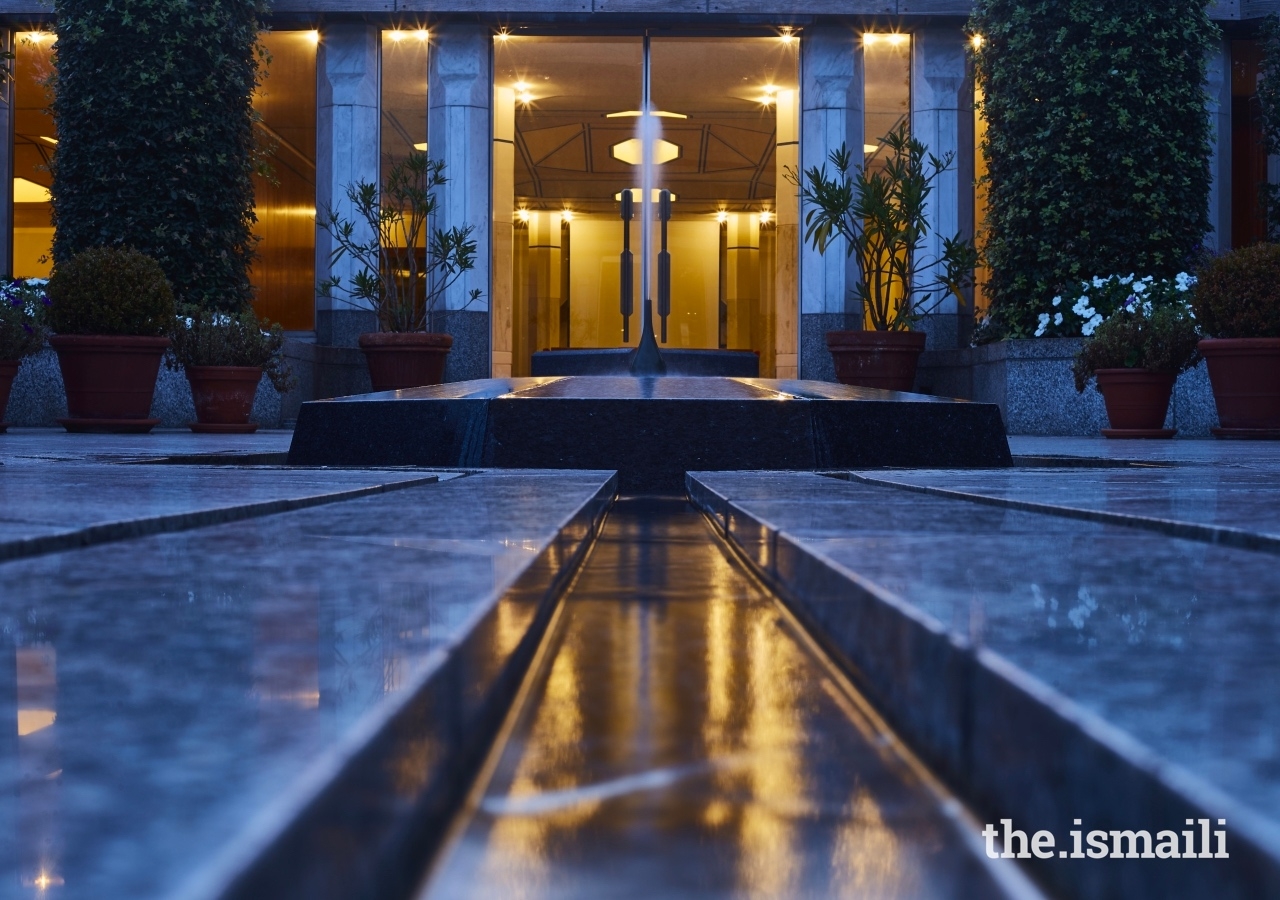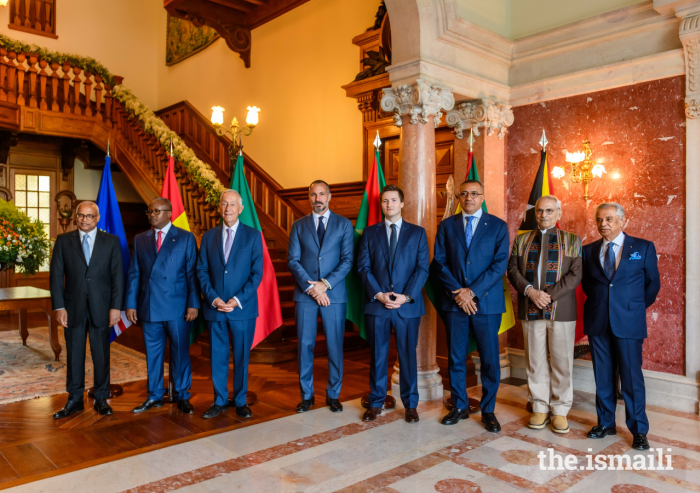Nestled among such glorious London heritage buildings as the Victoria and Albert Museum and the Natural History Museum, the Ismaili Centre responds in harmony to South Kensington’s built environment, adopting an embellished lighter-hued façade and a chamfered corner.
At the same time, it expresses a distinctly modern Islamic identity through the use of materials such as marble and cut woodwork grille or mashrabiya in Arabic; the design feature of a prominent heptagonal water fountain at the entrance; the calligraphy and geometric ornamentation on its surfaces; as well as the prominence of light as it moves through the building. The roof of the Ismaili Centre, London features a chahar bagh, or four-part garden, borrowing from Mughal landscape heritage while simultaneously recalling the Fatimid tradition of rooftop gardens.
In true cosmopolitan spirit, British architects Casson Conder Partnership designed this building to serve an immigrant Muslim community, while the roof garden was designed by the Boston-based Japanese firm Sasaki Associates.
Members of the Jamat, like others in the former British colonies, began to migrate to the West at the end of the Second World War that coincided with the end of colonial rule, seeking better livelihoods and higher standards of education. Once an immigrant community, we have over three generations settled onto British soil — priding ourselves on being forward-minded and engaged citizens of the UK.
The Ismaili Centre, London, became the first in a series of Centres to be built around the world as ambassadorial buildings, expressing the community’s unique heritage of faith and culture. They embody Mawlana Hazar Imam’s architectural vision — bringing forward the language of Islamic architecture to reflect a traditional set of symbolic values reinterpreted using modern architectural style, material, and technique.
In addition to London, today Ismaili Centres exist in Vancouver, Lisbon, Dubai, Dushanbe, and Toronto, with one more currently in the design phase, to be built in Houston.
Historically, Jamatkhanas have been situated within the broader context of Muslim spaces of congregation in the Middle East, and Central and South Asia. By the mid-19th century, Ismailis had begun to use the term Jamatkhana to refer to their spaces of community congregation. Jamatkhanas became centres for contemplation, prayer, education, and social gathering. Ismaili Centres today are conceived of as symbolic markers of the permanent presence of the Ismaili community. They represent the Jamat's approach to understanding the faith of Islam, and its compatibility with modern life.
The Centre in London regularly opens its doors to the general public for major events.
“Like other Ismaili Centres around the world, the London Centre serves not only as a gathering place for Ismailis, but as an active participant in local society, sponsoring a variety of cultural initiatives — exhibitions, lectures and other public events,” remarked Mawlana Hazar Imam in 2008. “These efforts reflect our pride in our heritage and our eagerness to share it with others.”
The Ismaili Centres fulfil many roles in our lives. They are spaces of gathering, hosting musical concerts, performances, theatre productions, seminars, and workshops. They are active buildings seeking to build bridges between civil society groups and institutions, government bodies, and other faith groups. They are thriving indoor and outdoor spaces that accommodate social and cultural gatherings, inspire intellectual engagement and reflection, as well as prayer and spiritual contemplation.
As we celebrate the 35th anniversary of the Ismaili Centre, London, we also celebrate our strength and success as a community that contributes meaningfully to the social, economic, and cultural landscape of 21st-century Britain.










